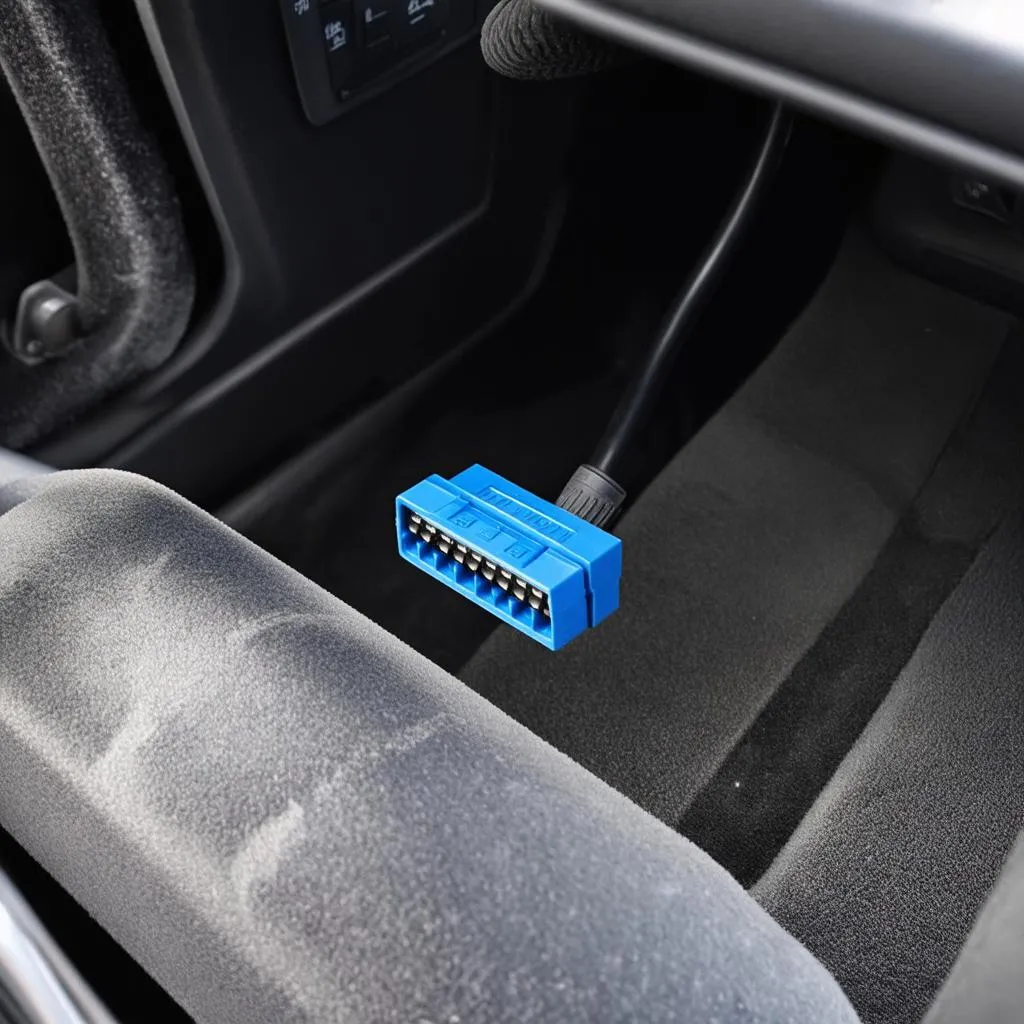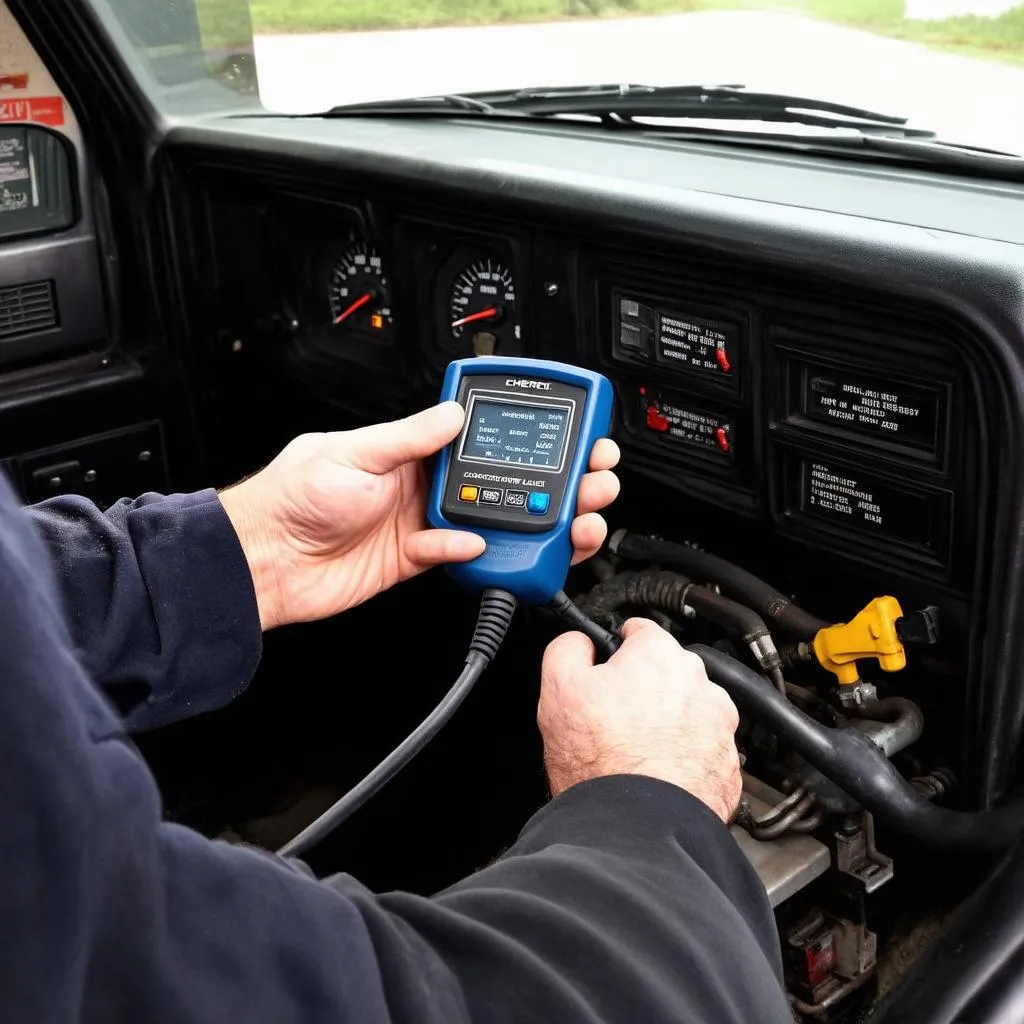Picture this: you’re working on your trusty 1991 Chevy C1500 pickup, hoping to diagnose that pesky “check engine” light. You’ve got your trusty toolkit ready, but there’s one crucial piece missing – the location of the OBD connector. Sounds familiar? Don’t worry, you’re not alone. Many C1500 owners find themselves on a scavenger hunt for this elusive connector.
This guide is here to shed light on the 1991 Chevy C1500 Obd Connector, its location, and answer some common questions you might have.
Decoding the Mystery of Your 1991 Chevy C1500 Obd Connector
Before we dive into the specifics, let’s take a step back. Why is finding this connector so important?
Think of the OBD (On-Board Diagnostics) connector as your truck’s communication portal. It’s the key to unlocking valuable information about your engine’s performance. By connecting a diagnostic tool, you can:
- Read and interpret those frustrating “check engine” light codes.
- Monitor crucial engine parameters like fuel pressure, air intake, and more.
- Perform specific diagnostic tests.
Essentially, it empowers you to take control of your truck’s health and performance.
Unveiling the Location of Your OBD Connector
For the 1991 Chevy C1500, the OBD connector is typically located under the dashboard, on the driver’s side, often near the steering column or fuse box. It might be tucked away, so don’t be afraid to feel around a bit. The connector itself is usually rectangular and black, with a 12-pin configuration.
 OBD Connector Location
OBD Connector Location
Common Questions about the 1991 Chevy C1500 Obd Connector
Here are some frequently asked questions about the 1991 C1500 OBD system:
Q: My truck is from 1991. Does it even have an OBD connector?
A: Yes, even though OBD-II wasn’t mandatory until 1996, many 1991 vehicles, including the Chevy C1500, were equipped with a form of OBD-I. However, keep in mind that the functionality and diagnostic capabilities of OBD-I are more limited than OBD-II.
Q: Can I use any OBD scanner with my 1991 C1500?
A: Not necessarily. While some modern scanners are backward compatible with OBD-I systems, you might need a specialized scanner or adapter for optimal performance. Always check the scanner’s compatibility before purchasing.
Q: I’m getting an error code. What should I do?
A: Don’t panic! Each error code corresponds to a specific issue. You can refer to your vehicle’s service manual or consult online resources to decipher the code and determine the appropriate course of action.
Troubleshooting Tips
- Check for loose connections: Ensure the connector is securely plugged into the scanner.
- Consult a mechanic: If you’re unsure about any aspect of the diagnosis or repair, don’t hesitate to seek professional help.
 Mechanic Using Diagnostic Tool
Mechanic Using Diagnostic Tool
Beyond the Technicalities: A Holistic Approach
Interestingly, some car enthusiasts find a connection between the smooth operation of their vehicles and maintaining positive energy within the cabin. While this might sound a bit esoteric, there’s something to be said about taking pride in your vehicle and treating it with respect. Just like a clean and organized workspace can boost productivity, a well-maintained vehicle can enhance your driving experience.
Need Help with Your 1991 Chevy C1500?
We understand that dealing with car troubles can be frustrating. If you’re having difficulty locating your OBD connector, interpreting error codes, or need assistance with repairs, don’t hesitate to reach out. Our team of automotive experts is here to provide guidance and support. Contact us on Whatsapp at +84767531508 for 24/7 assistance.
Keep Exploring TechCarUSA
For more insights into vehicle diagnostics, repair tips, and automotive news, explore these related articles:
- Understanding OBD-I vs. OBD-II Systems
- Common Chevy C1500 Engine Issues
- Choosing the Right Diagnostic Scanner for Your Vehicle
Remember, knowledge is power when it comes to maintaining your vehicle. Safe driving!